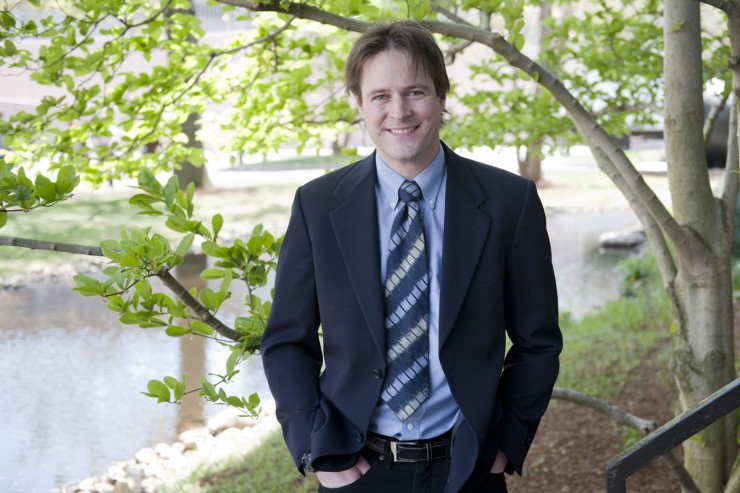New research sheds light on microbes’ evolution

The findings, Hellweger says, shed light on how ocean microbes may respond to global climate change. Photo by Kristie Gillooly.
Their findings were published Thursday in the journal Science. The paper—titled “Biogeographic patterns in ocean microbes emerge in a neutral agent-based model”—was co-authored by Ferdi Hellweger, a microbial ecology expert and an associate professor of civil and environmental engineering; his doctoral student Neil Fredrick, PhD’15; and oceanographer Erik van Sebille of Australia’s University of New South Wales.
Over the past several decades, ecologists have come to understand that both natural selection and neutral evolution—that variation within and between species is caused by genetic drift and random mutations—play a role in the biogeographic patterns of ocean microbes.
In this study, Hellweger et al. quantified the role of neutral processes by simulating division, mutation, and death of some 100,000 individual marine bacteria cells with full genomes in a global surface ocean circulation model. They ran the model for up to 100,000 years and then analyzed the output using advanced DNA alignment algorithms.
Their results flew in the face of the long held notion that microbes are infinitely mobile—that the same cells could be found anywhere in the world’s oceans, unhindered by geographic boundaries. On the contrary, the researchers found that microbes evolve faster than the ocean circulation can disperse them, leading to substantial—and dynamic— biogeographic patterns in their surface ocean population.
“Microbes differ between provinces because of neutral evolution and dispersal limitation,” said Hellweger, whose ongoing research on this topic is supported by grants from the National Science Foundation and the National Oceanic and Atmospheric Administration. “Because provinces are not well-mixed, the differences can continue to grow.”
What’s more, the findings shed light on how ocean microbes may respond to global climate change. “You may not see microbes adapt to climate change as rapidly if ocean microbes were completely mixed and they were everywhere,” Hellweger posited. “Certain species of microbes may not thrive under new temperatures in certain provinces.”
Up next: Hellweger, Fredrick, and van Sebille will use a similar modeling approach to explore deep ocean microbes in addition to environmental selection.
Media Contact
All latest news from the category: Life Sciences and Chemistry
Articles and reports from the Life Sciences and chemistry area deal with applied and basic research into modern biology, chemistry and human medicine.
Valuable information can be found on a range of life sciences fields including bacteriology, biochemistry, bionics, bioinformatics, biophysics, biotechnology, genetics, geobotany, human biology, marine biology, microbiology, molecular biology, cellular biology, zoology, bioinorganic chemistry, microchemistry and environmental chemistry.
Newest articles

High-energy-density aqueous battery based on halogen multi-electron transfer
Traditional non-aqueous lithium-ion batteries have a high energy density, but their safety is compromised due to the flammable organic electrolytes they utilize. Aqueous batteries use water as the solvent for…

First-ever combined heart pump and pig kidney transplant
…gives new hope to patient with terminal illness. Surgeons at NYU Langone Health performed the first-ever combined mechanical heart pump and gene-edited pig kidney transplant surgery in a 54-year-old woman…

Biophysics: Testing how well biomarkers work
LMU researchers have developed a method to determine how reliably target proteins can be labeled using super-resolution fluorescence microscopy. Modern microscopy techniques make it possible to examine the inner workings…





















